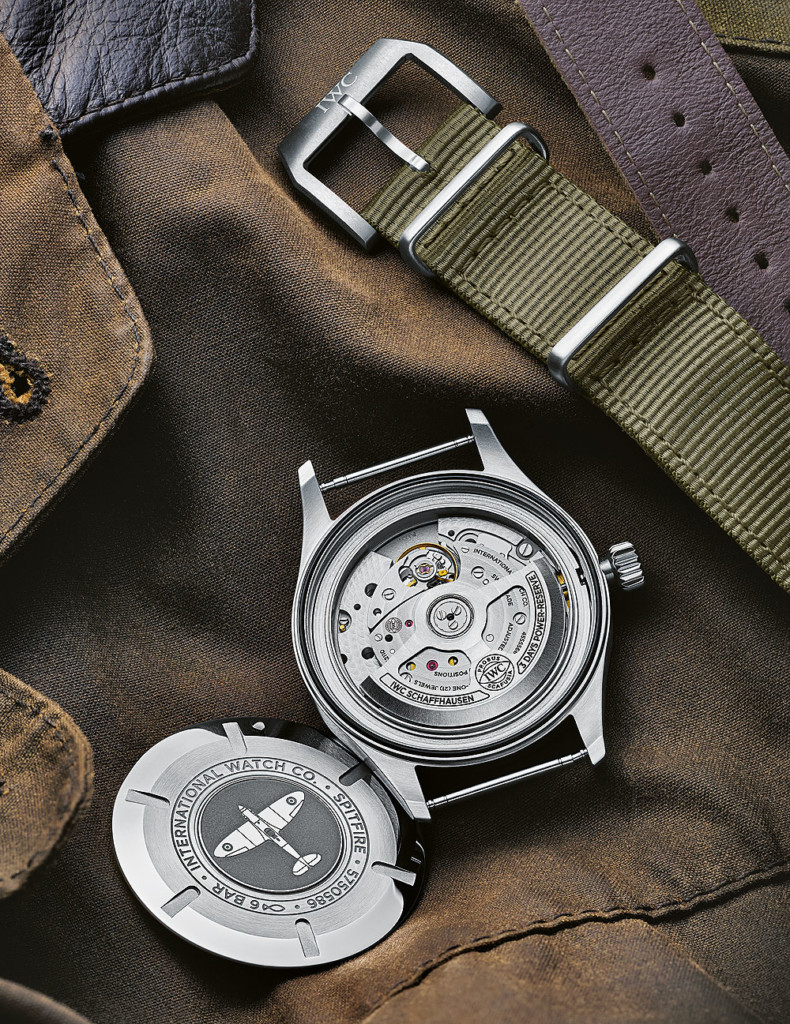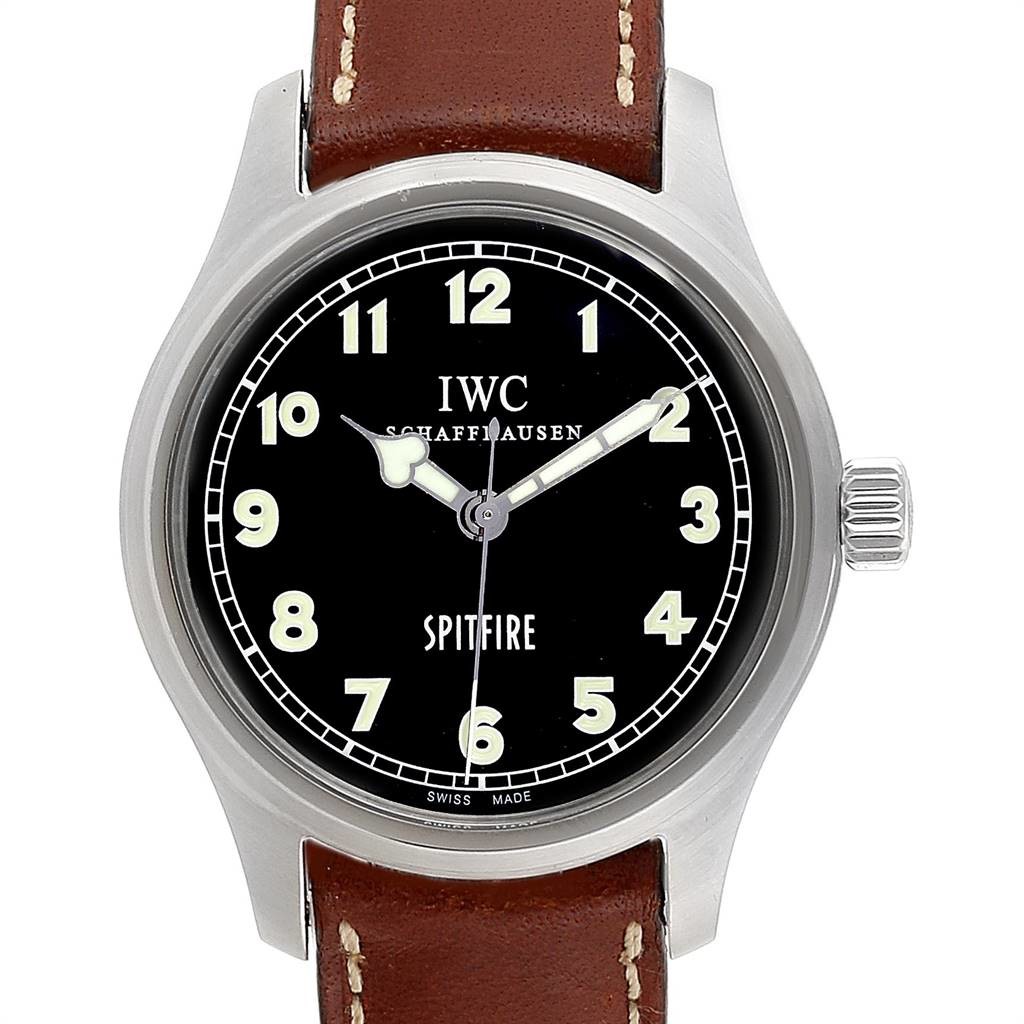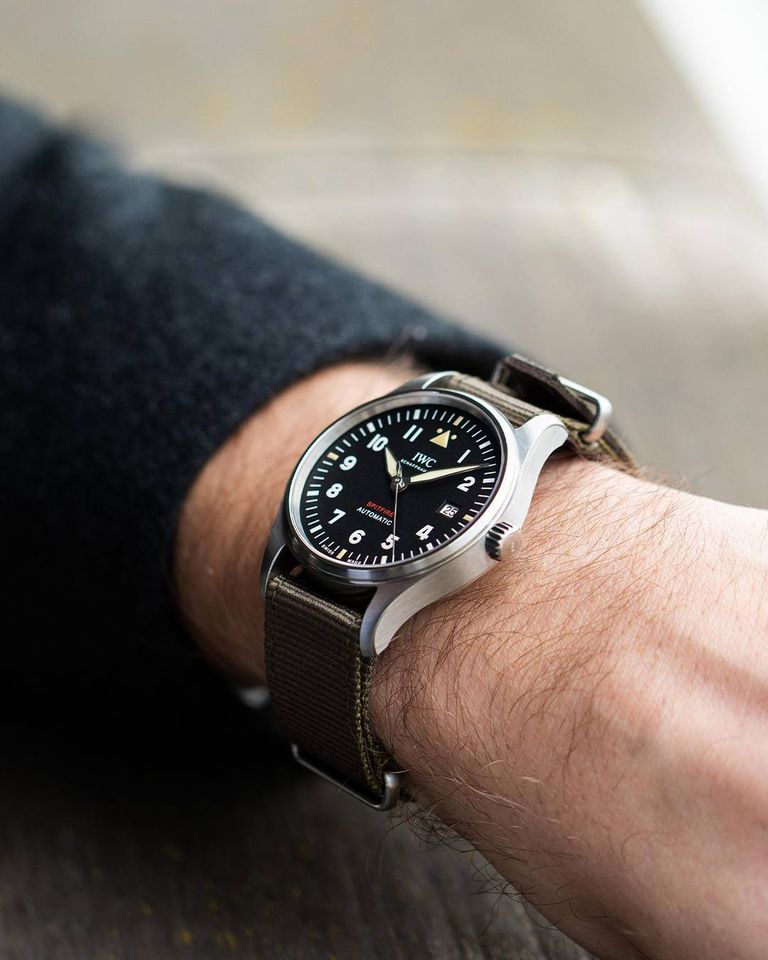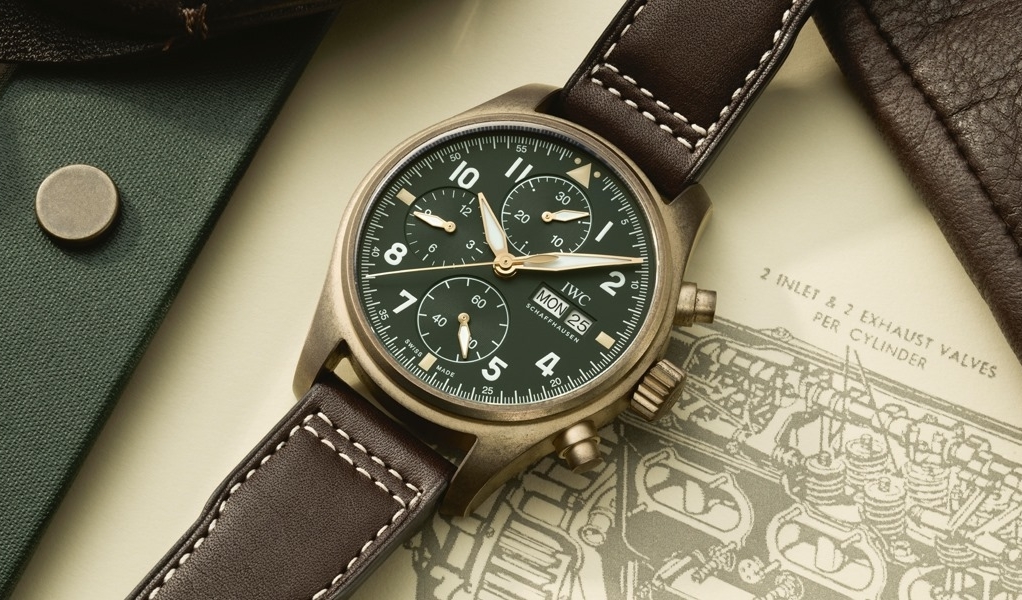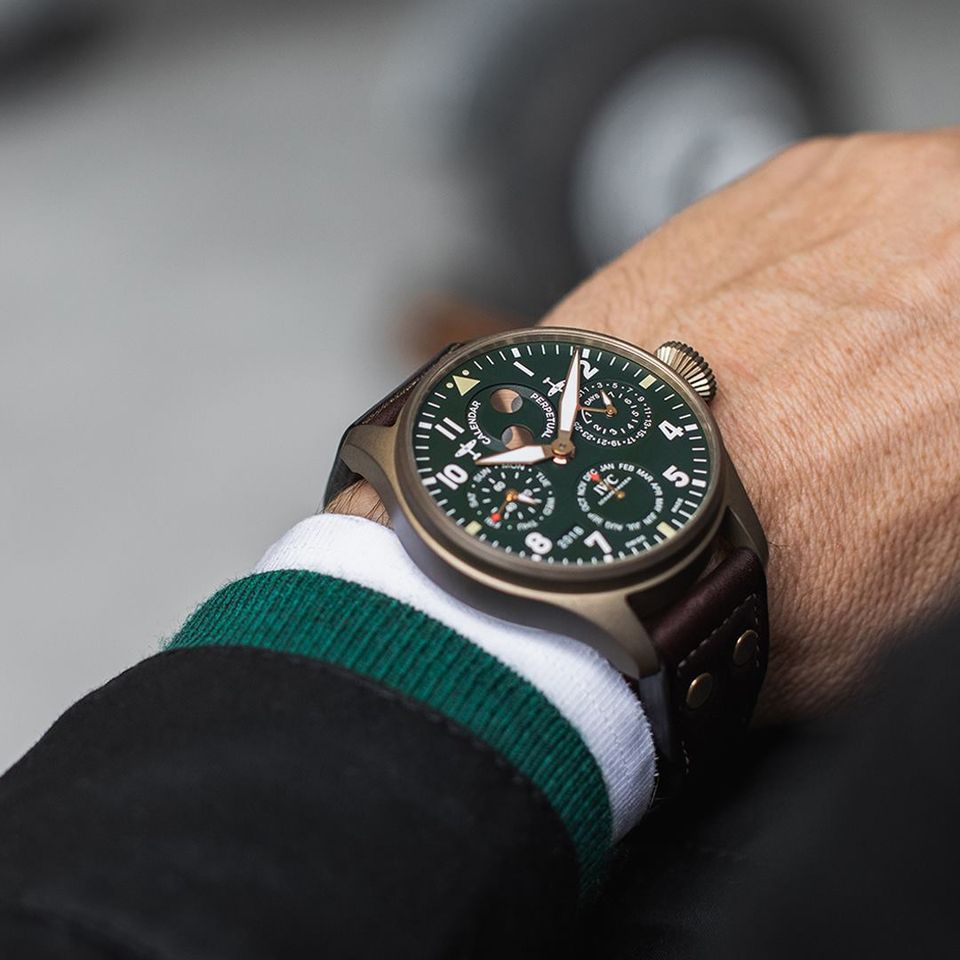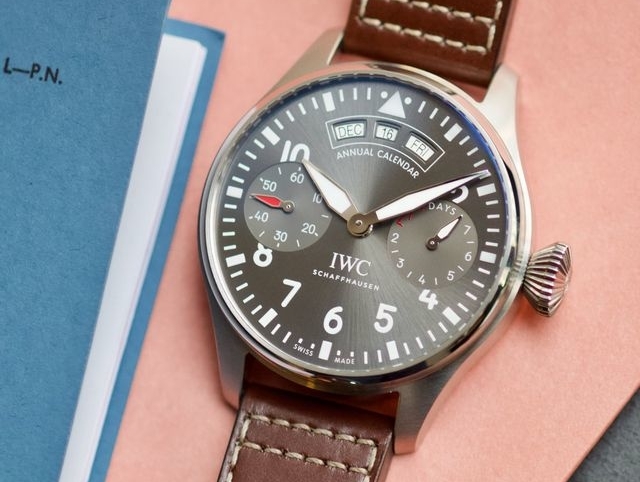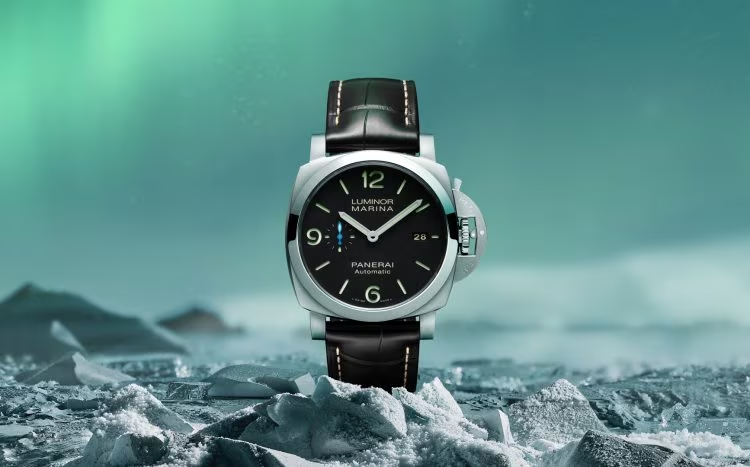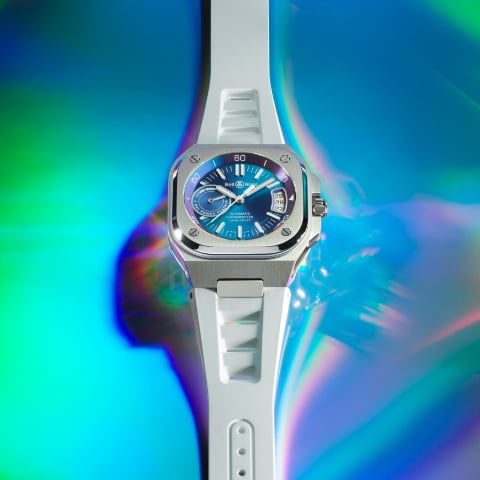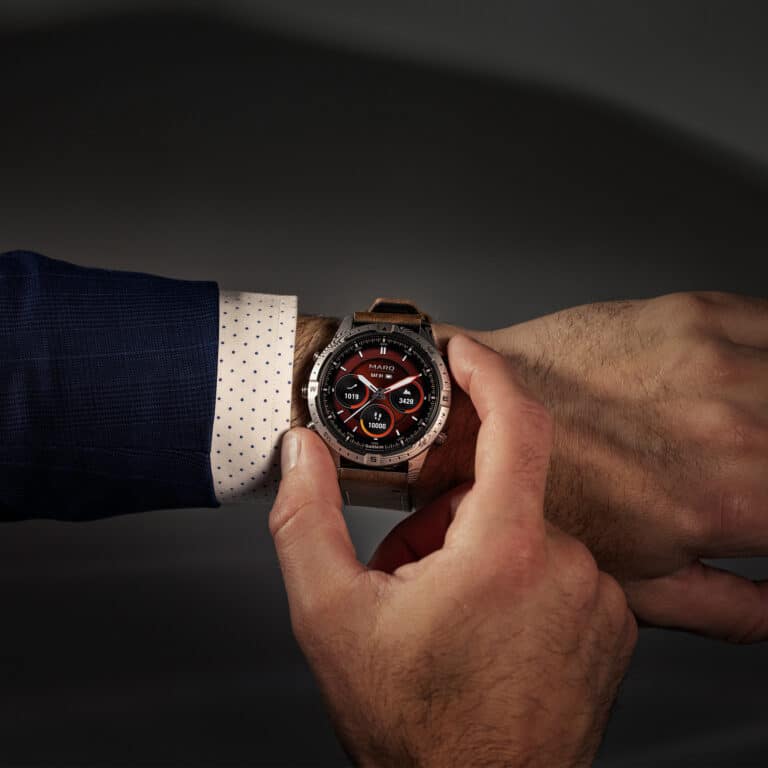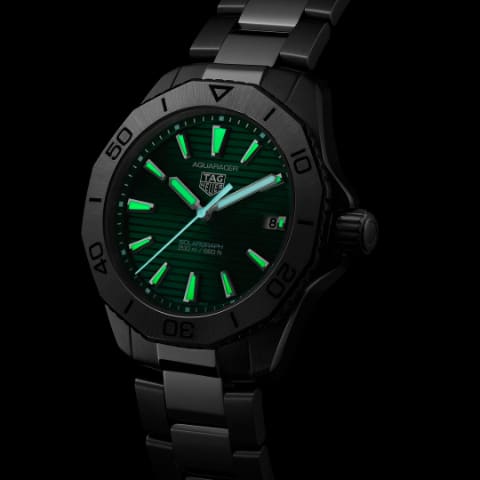Considered one of the world’s most prolific watchmakers, IWC has made no efforts to conceal their talents in manufacturing extraordinary Pilots watches. Boasting a pedigree and charm of equal measure and establishing an eternal reputation for optimal legibility and operation with easy to read dials, large crowns and pronounced push pieces, the family of aviation timepieces has fulfilled the needs of professional and amateur pilots alike. No timepiece from the collection, however, is quite as esteemed as the IWC Spitfire.
Inspired by the legendary fighter plane of the same name, the IWC Spitfire watch collection remains true to the purist instrument designs found in the brand’s history. Since the first IWC Pilots watch was introduced in 1936, nicknamed the “Special Pilot’s Watch”, every aviation timepiece that followed has played an integral part in the aeronautics industry with the IWC Spitfire becoming no exception. They beautifully revive the manufacturer’s military background with their colour coding and authentic leather straps and more recently have become home to some of Swiss manufacturer’s new complications and in-house calibres.
History of IWC Spitfire Watches
Despite being introduced to the world in 2003, the IWC Spitfire has a history that goes even further back than this. In the late 1940’s, IWC responded to an invitation from the British government to develop a special wristwatch for the Royal Air Force. In 1948, the IWC Mark 11 navigation watch was introduced boasting IWC’s hand wound Calibre 89 in a soft iron inner case and a boldly designed dial legible at night. This design did more than any other timepiece to establish the requirements and aesthetics of today’s modern pilot’s watches; the IWC Spitfire being one of them.
Then in 2001, a “Spitfire” version of the IWC Mark XV was created as a limited edition for the British market. The design commemorated the famous British Royal Air Force Spitfire and the major role it played in the Battle of Britain. It’s matte black dial, iconic cathedral hands and railroad chapter ring became an instant hit with collectors while the mention of ‘Spitfire’ at 6 o’clock ignited the beginning of a legend. Two years later, in 2003, the world was treated to the first non-limited IWC Spitfire noted by their pale dials and vintage-inspired aesthetics.
The IWC Spitfire Watch Collection Today
Nearly twenty years later, and the IWC Spitfire has become an independent line in its own right, grouped under the manufacturer’s pivotal Pilots collection. While still reminiscent of the IWC Mark 11 that first inspired it, the design has largely evolved incorporating new design elements, materials, calibres and complications. There’s no longer any shiny silver dials or sunburst patterns like those first seen in 2003, but instead we see military impressions of olive green, black and slate paired with carefully chosen metals and straps for maximum effect.
First up is the IWC Spitfire Automatic, available in a stainless steel or bronze 39mm case. The classic steel variant boasts a black dial with either a green textile or brown leather strap while the bronze showcases a handsome military green dial on a brown leather strap. Powered by the IWC manufactured 32110 Calibre automatic winding movement, the IWC Spitfire Automatic watches provide a 72 hour power reserve and classic hour, minutes, seconds and date function.
One of the collection’s best selling pieces is the IWC Spitfire Chronograph. For the first time ever, IWC presents a Pilots Chronograph with one of their 69000-calibre family movements. The 69380 automatic winding movement is housed within a reduced 41mm stainless steel or bronze case and boasts a classic column wheel design with stopped hours and minutes at 9 and 12 o’clock and small seconds at 6. The bidirectional pawl-winding system also impresses with a power reserve of 46 hours. The IWC Spitfire Chronograph is available in several variants including a black dial on a choice of brown leather or green textile, a sophisticated slate metallic dial on a mirror polished bracelet or a green dial with bronze case.
The handsome IWC Big Pilots Spitfire Bronze with its appealing military olive green dial is currently the only one in the modern-day collection to feature the brand’s legendary perpetual calendar technology. With the help of a Pellaton winding system and two barrels, the IWC-manufactured 52615 calibre builds up a power reserve of seven days while its double moon display does not need adjusting for 577.5 years. The perpetual calendar on the other hand recognizes the different lengths of the months and leap years automatically and requires no correction until 2100.
The last IWC Spitfire we must mention is the stunning IWC Big Pilots Spitfire Annual Calendar. Presented on a metallic slate coloured dial, the annual calendar complication, powered by the 52850 IWC-manufactured automatic calibre, shows the month, date and day in three separate date windows arranged according to the American date format. The advance mechanism automatically takes the length of individual months into account and requires manual correction via the crown once a year at the end of February. The movement also boasts two barrels to provide the higher torque required to drive the three display discs of the annual calendar and when fully wound, they provide enough energy for a 7 day power reserve.
If you’d like to learn more about the IWC Spitfire watch collection and shop all the stunning models mentioned here, head over to the Jura Watches website. Their talented team of luxury watch specialists are on hand to help with any questions you have on 01335 453453 or at help@jurawatches.co.uk.
